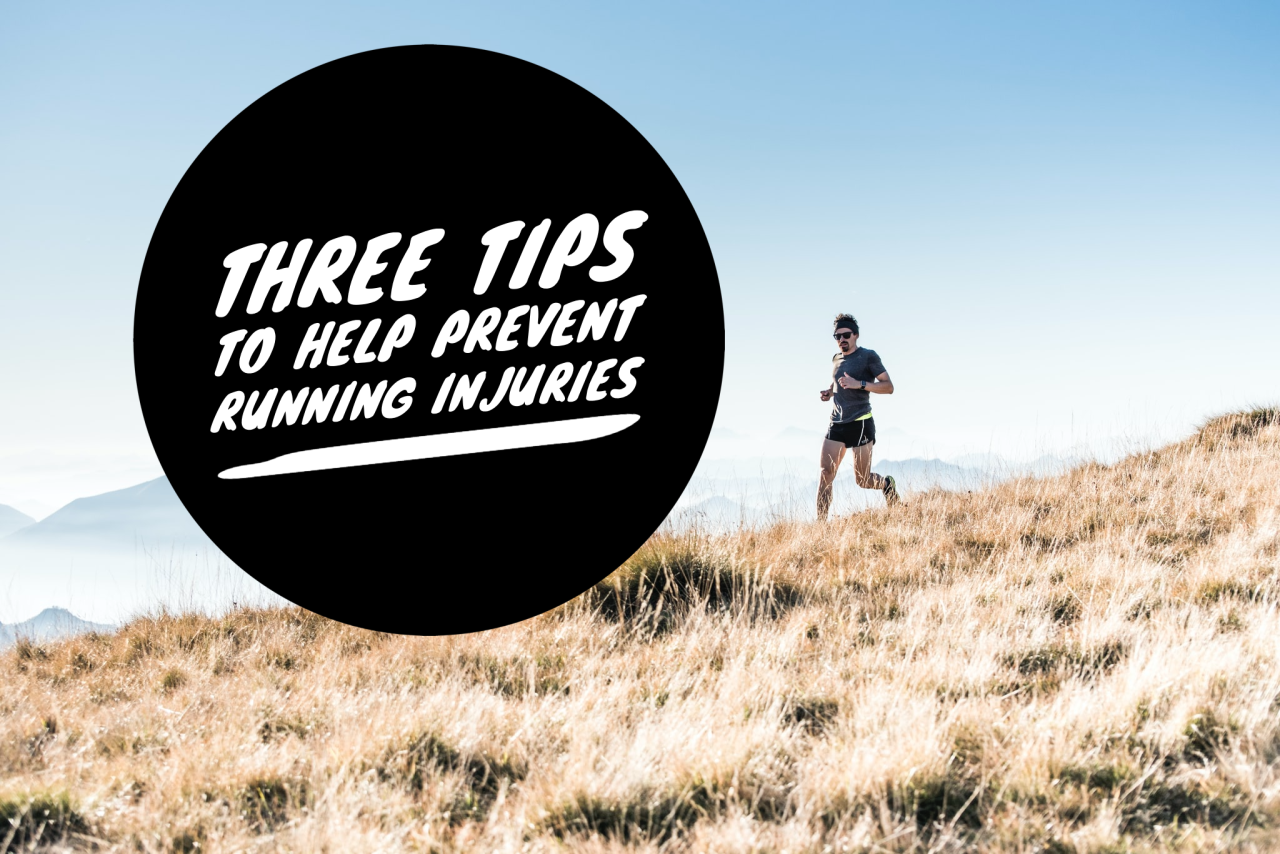Three Tips to Help Prevent Running Injuries
About half of the running population is thought to be injured at some point in one year. These “are defined as any damage or disorder that causes significant change or even cessation of ones normal running routine.”(1) So why is this so common? Although there will never be any solution to completely prevent pain, we can try to limit the likelihood and even the severity of the running pain with the following tips. (Additionally, this may focus on our demographic of runners, but some of the same concepts can apply across all spectrums of athletics).
Warm-up and Recovery
If you have suffered a running injury, a lot of times you can look before and after as a clue to why. Although this is a purely anecdotal analysis, I would rate nearly 100% of my running clientele with extremely poor warm-up and/or recovery techniques. These may be “boring,” yet they still have been found to have a strong link to sports injuries. One is thought to have about a 60% more likelihood of being injured if they don’t get eight hours of sleep (2). As a clinician, what is extra frustrating about this number is it basically requires no effort to sleep, but of course the effort to PRIORITIZE it is a different conversation all together. If you can cut your chances of getting hurt in half, simply by sleeping...would you do it? The answer should absolutely be yes!
Additionally, our bodies don’t do great from a sedentary environment (21st century careers, desk jobs, etc.) to performing at a near maximum effort. This lack of “grey area” in between not only can be taxing on the tissue, but is not optimal for performance. We often prescribe a dynamic warm-up and different drills so that the body is adequeately prepared for the task at hand, perfusing the tissue with blood flow/oxygen and creating tensegrity for tendon health.
The 10% Rule
We never want to increase the volume of our total body of work performed by more than 10% each week; especially if this were done on a consistent basis. This marker has thought to be the maximum amount of training one can do before the body begins to break down. Although we are incredibly adaptable as humans and can handle a lot of stress, when we push it “too much, too fast” this is where we get into trouble. The obvious example are our “snowbirds” who take the winter off from running, but try to do the same amount once spring hits...BAD idea!
To put into context, this would mean if you are running 50 miles/wk, you would not run more than 55 miles the following week, because that is above the 10% threshold. Also, the same can be said for other athletes. For example, if I have an athlete collectively lifting on average 5k lbs in a workout session, they would not lift more than 5.5k lbs the next week.
We want to make sure we do not accumulate too much stress in too short of a time because this is a major risk factor to not only running injuries, but sports injuries in general.
30 Mile Threshold
If you are not an elite runner or training for a competition, 30-39 miles/wk has been thought to be the threshold recommended to limit running injuries (3). Why does this amount of mileage pose increased risk? Most likely it has to do with a combination of the lack of first two tips, that add up cumulatively after consistently running 30 miles/wk. Our bodies can only run on little sleep, going “too fast, too soon” for so long before we cause tissue harm.
So, if you are simply running because you enjoy it and/or the benefits it provides cardiovascularly, then there would be no extra benefit by running more, other than simply increasing chances of injury by hitting this threshold. On the non-running days, we usually recommend addressing mobility and/or stability deficits found in our assessment while adding plyometrics or other specific exercises/drills that are applicable to running to offset the large training volume. This is where the popularity of cross-training and resistance training come into play and can be incredibly helpful.
If you have suffered a running injury, have pain when running or any other sports injury complaint for that matter, check out our website for services offered or contact us for more info. We love working with athletes and coaching you back to your best.
References:
About the author
Dr. Sam Reals’ empathy for people in pain motivates him to learn the most up-to-date treatment standards and rehab protocols, encouraging patients to incorporate exercise long after their care plan has concluded. Dr. Sam Reals believes it is only through exercise that people can unlock their true potential and increase longevity to a happy, fulfilling life.
